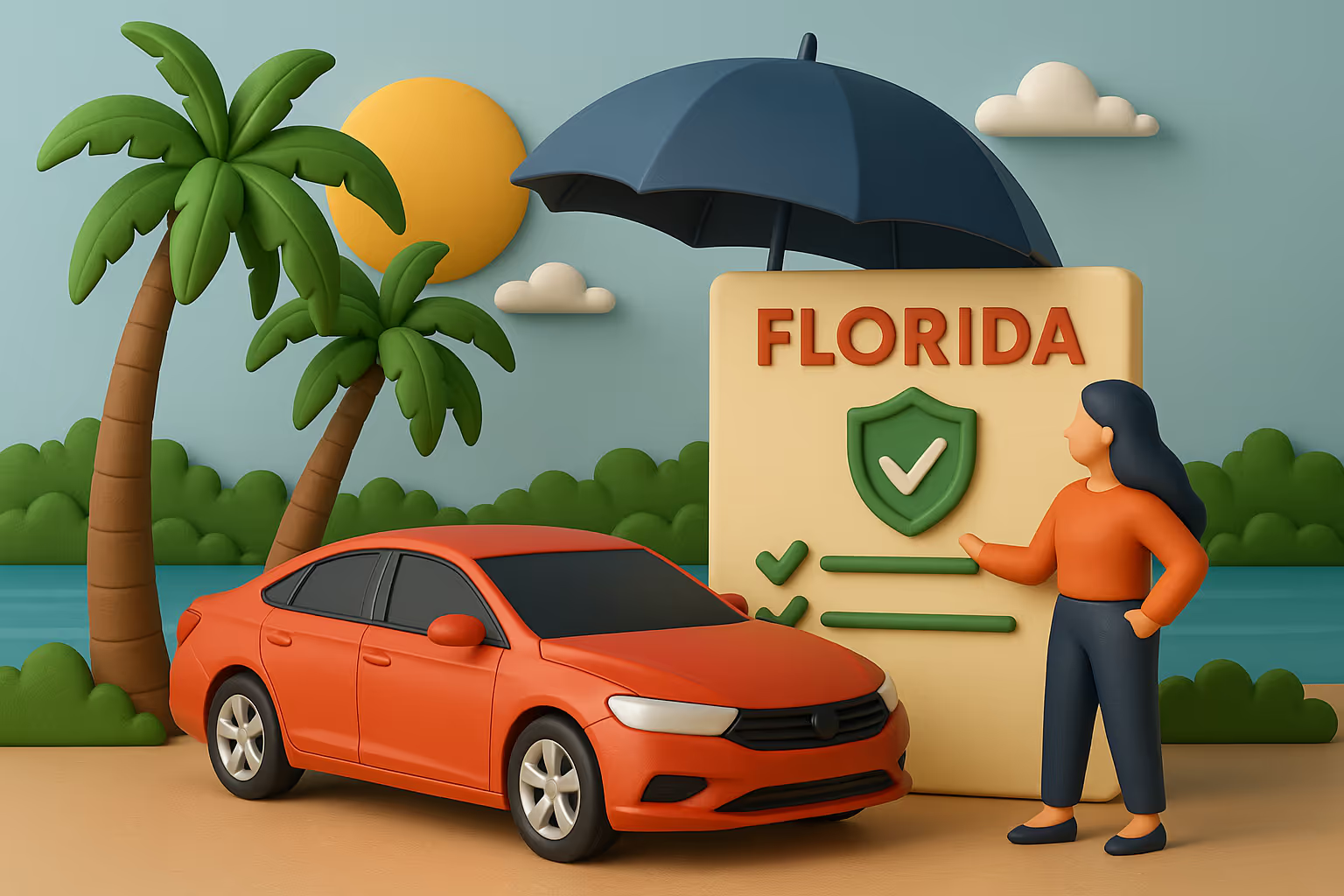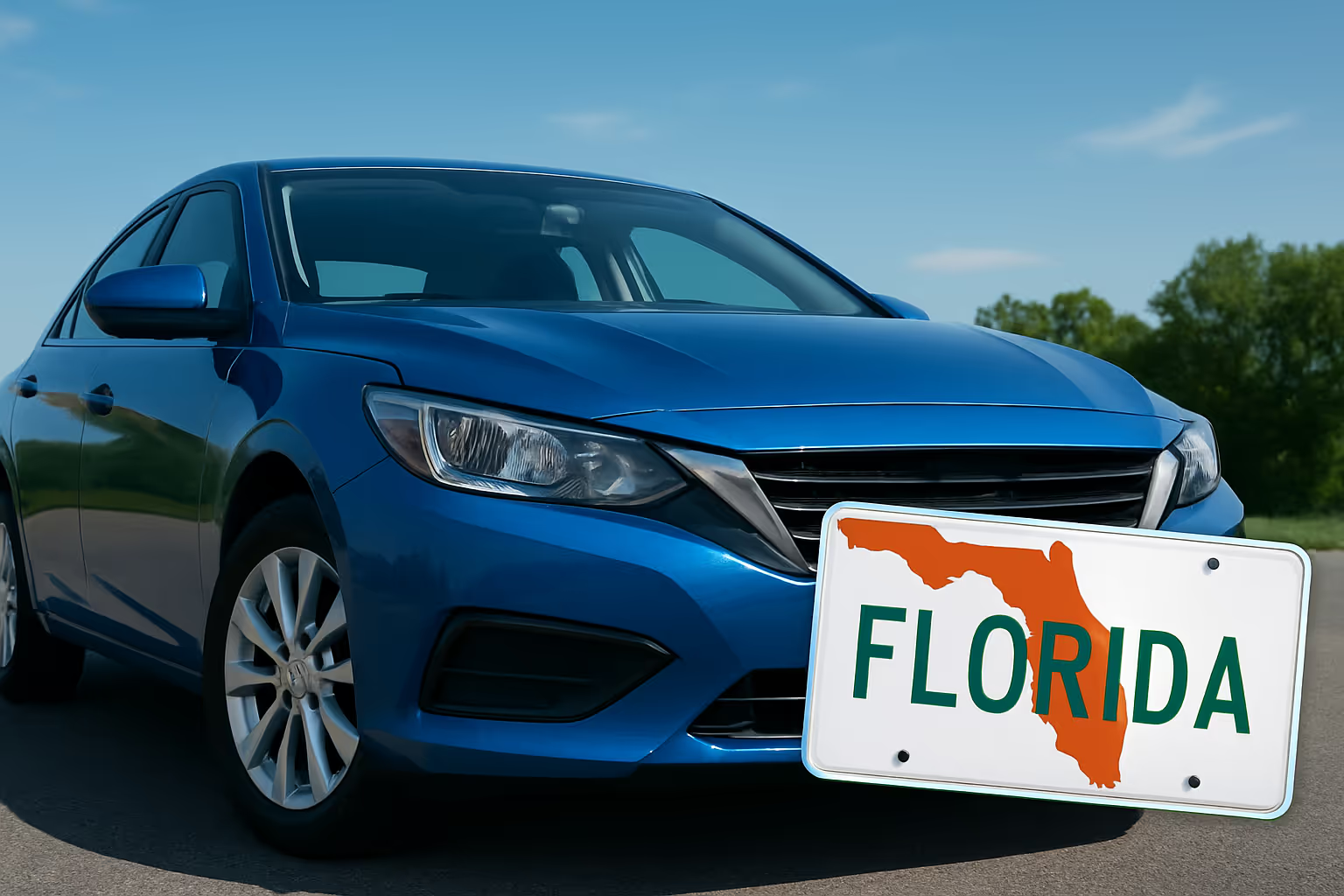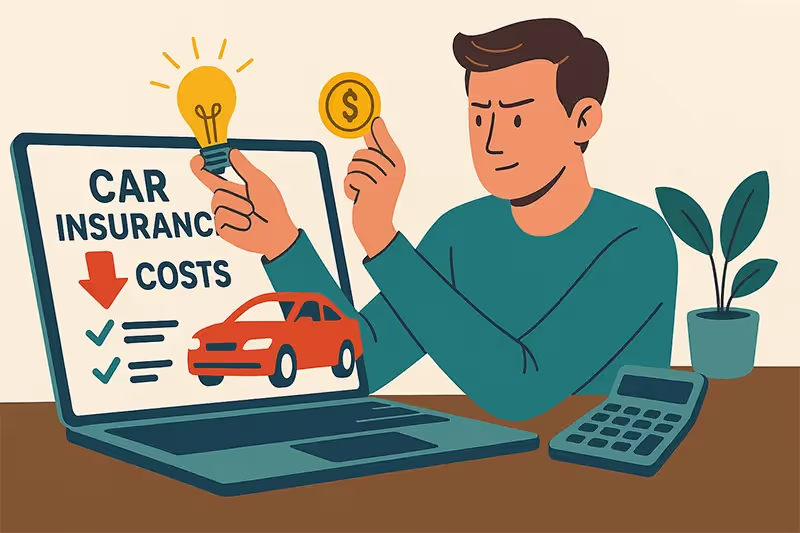Florida Car Insurance Requirements: What Every Driver Needs to Know

Florida has some of the most unique and confusing car insurance laws in the United States. While most states require drivers to carry bodily injury liability insurance, Florida takes a completely different approach — one that often leaves drivers underprotected and exposed to serious financial risk.
In this guide, you’ll learn everything you need to know about Florida’s car insurance requirements, including what’s mandatory, what’s optional but essential, and how to choose the right coverage for your needs.
Why Florida’s Car Insurance Laws Are So Different
Florida is one of only two states (alongside New Hampshire) that does not require bodily injury liability coverage. Instead, it operates under a no-fault insurance system, relying primarily on Personal Injury Protection (PIP) to pay for medical expenses after an accident — regardless of who caused it.
This no-fault approach sounds convenient, but it creates coverage gaps that can leave drivers responsible for huge out-of-pocket costs. Many Floridians don’t realize their “legal minimum” coverage may not actually protect them financially in a serious accident.
Mandatory Car Insurance Coverage in Florida
Florida law requires only two types of coverage:
1. Personal Injury Protection (PIP) — Minimum $10,000
PIP pays:
- 80% of reasonable medical expenses
- 60% of lost wages
- Essential services (like help with daily tasks if you’re injured)
- Up to $5,000 in death benefits
⚠️ Limitations:
PIP doesn’t cover pain and suffering, full medical bills, or damage to your car. You’re still responsible for 20% of medical costs and anything above your policy limits.
2. Property Damage Liability (PDL) — Minimum $10,000
PDL covers damage you cause to other people’s property — vehicles, buildings, fences, etc.
💡 Example: If you crash into a $40,000 car, your $10,000 limit pays only part of the damage. You’re personally responsible for the remaining $30,000.
Penalties:
Driving without insurance can result in license suspension for up to three years and expensive reinstatement fees.
The Big Coverage Gap: No Bodily Injury Requirement
Here’s where Florida’s system becomes risky — you’re not required to carry bodily injury liability coverage.
If you cause an accident that injures someone, you could be personally sued for their medical bills, lost wages, and pain and suffering.
Example:
- Medical bills: $125,000
- Lost wages: $80,000
- Pain & suffering: $150,000
- Total exposure: $355,000
Without bodily injury liability, you’re responsible for all of it.
💡 Recommended minimum:
At least $100,000 per person / $300,000 per accident for bodily injury liability.
Optional Coverages That Provide Real Protection
🚗 Uninsured/Underinsured Motorist Coverage (UM/UIM)
Covers your injuries and car damage when the at-fault driver has no insurance.
Essential in Florida — about 1 in 5 drivers are uninsured.
🔧 Comprehensive Coverage
Protects your car from non-collision damage: theft, vandalism, flooding, hail, and hurricanes — crucial in Florida’s storm-prone climate.
💥 Collision Coverage
Pays for damage to your car in a crash, regardless of fault. Often required for leased or financed cars.
🏥 Medical Payments Coverage (MedPay)
Covers remaining medical expenses after PIP maxes out.
🚙 Additional Options
- Rental Car Coverage — covers temporary transportation
- Gap Insurance — covers the difference between your loan balance and your car’s actual value if totaled
Understanding Florida’s No-Fault System
Under Florida’s no-fault system:
- Each driver’s PIP coverage pays their own medical bills after an accident.
- Fault doesn’t matter for medical payments — only for property damage.
- You can sue another driver only if your injuries are severe, such as permanent disability or significant scarring.
This system simplifies small claims but limits your ability to recover full damages in most cases.
What Affects Car Insurance Costs in Florida
Florida’s insurance rates are among the highest in the country. Here’s why:
- Hurricane and flood risk increases comprehensive coverage costs.
- High accident and fraud rates drive up PIP premiums.
- Urban congestion in cities like Miami and Orlando means more collisions.
- Uninsured drivers raise overall risk for everyone.
Average Annual Premiums (Full Coverage):
- Miami-Dade County: $2,800–$3,200
- Orlando (Orange County): $2,200–$2,600
- Rural North Florida: $1,600–$2,000
How to Choose the Right Coverage Levels
To protect your finances, match your insurance to your assets:
💡 Tip: Buy coverage equal to your net worth. Even if you don’t own a home now, future wages can be garnished after a lawsuit.
The Digital Advantage: Compare and Buy Online
Digital insurance marketplaces make shopping for coverage fast and transparent. You can:
- Compare rates from multiple insurers instantly
- Adjust coverage options and see real-time price changes
- Buy coverage 24/7 — even outside office hours
When comparing quotes, make sure:
- The coverage levels match across all quotes
- You check financial strength ratings (A.M. Best, Moody’s)
- You understand deductibles and fees before purchasing
Frequently Asked Questions (FAQ)
1. What is the minimum car insurance required in Florida?
Florida requires $10,000 in Personal Injury Protection (PIP) and $10,000 in Property Damage Liability (PDL).
2. Does Florida require bodily injury liability insurance?
No. Florida is one of only two states that doesn’t require it — but carrying it is strongly recommended.
3. What happens if I drive without insurance in Florida?
Your license and registration can be suspended for up to three years, and you’ll face reinstatement fees and higher future premiums.
4. How does Florida’s no-fault system work?
After most accidents, your own PIP coverage pays your medical bills, regardless of fault. You can sue only if you suffer severe or permanent injuries.
5. Is uninsured motorist coverage worth it in Florida?
Yes. About 20% of Florida drivers are uninsured, making UM coverage one of the best investments you can make.
6. Does comprehensive insurance cover hurricane damage?
Yes — if wind or debris damages your car. However, it doesn’t cover flooding from storm surge if the car is parked.
Final Thoughts
Florida’s minimum insurance requirements may keep you legal, but they won’t necessarily keep you protected. The combination of high medical costs, uninsured drivers, and hurricane risk makes it essential to go beyond the bare minimum.
By choosing adequate coverage — especially bodily injury liability and uninsured motorist protection — you’ll safeguard your finances, your family, and your peace of mind.
Driving in Florida comes with a specific set of legal requirements and coverage options, from personal injury protection to uninsured motorist coverage. Whether you're new to the state or just reviewing your current policy, our guide to Florida car insurance will help you make an informed decision.
To see how Worth can reduce your risk.
Get a Free Quote


















